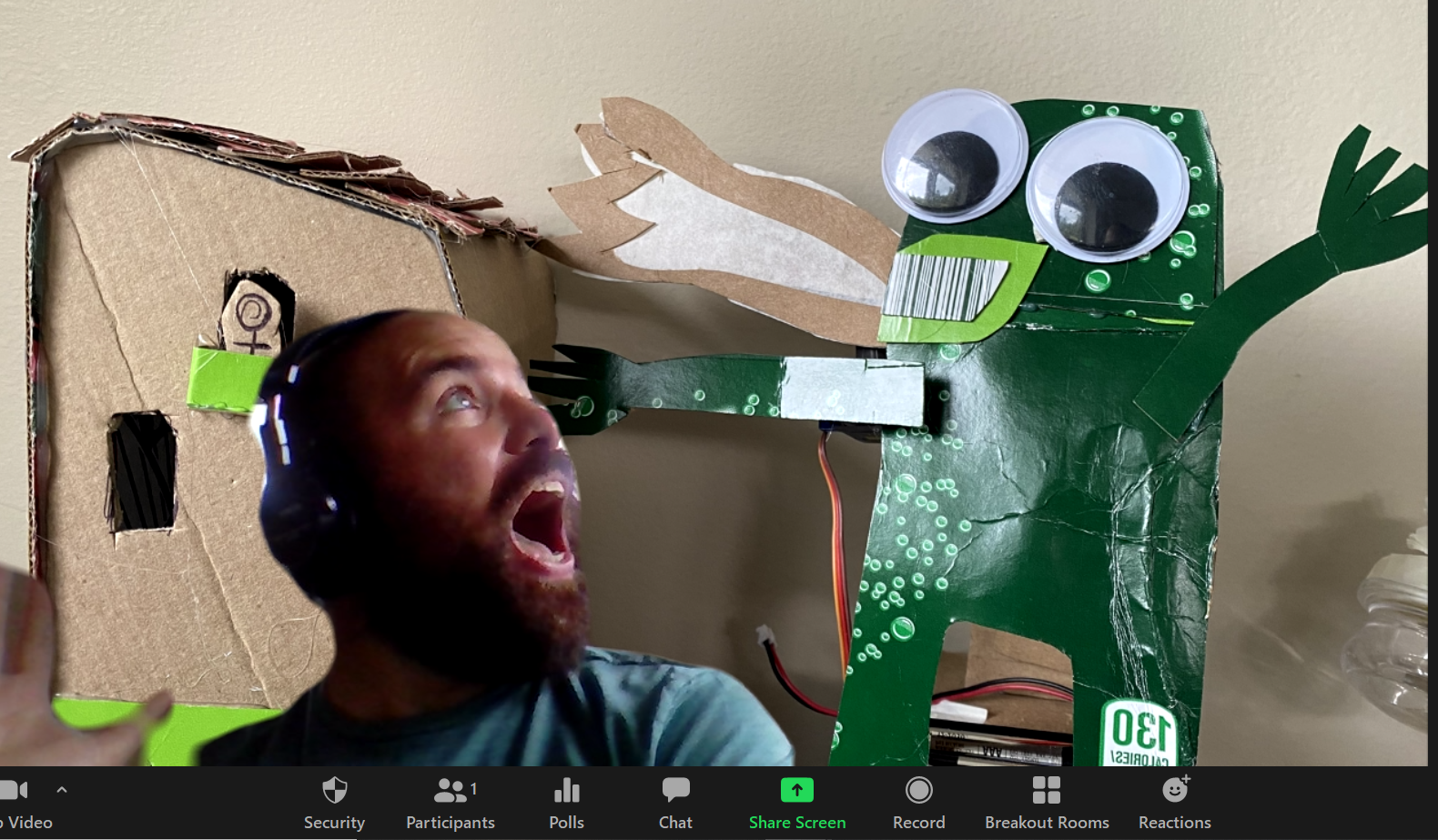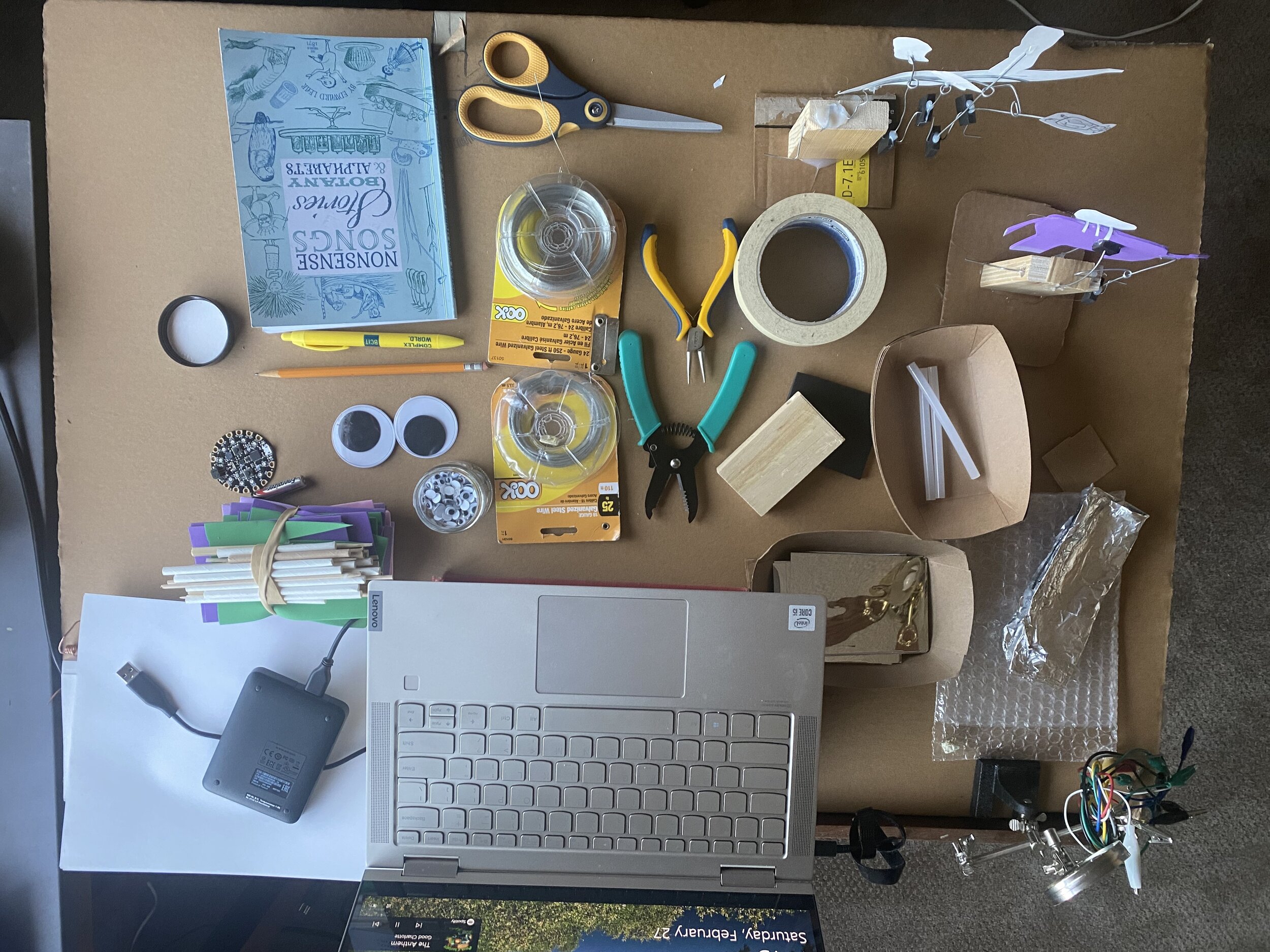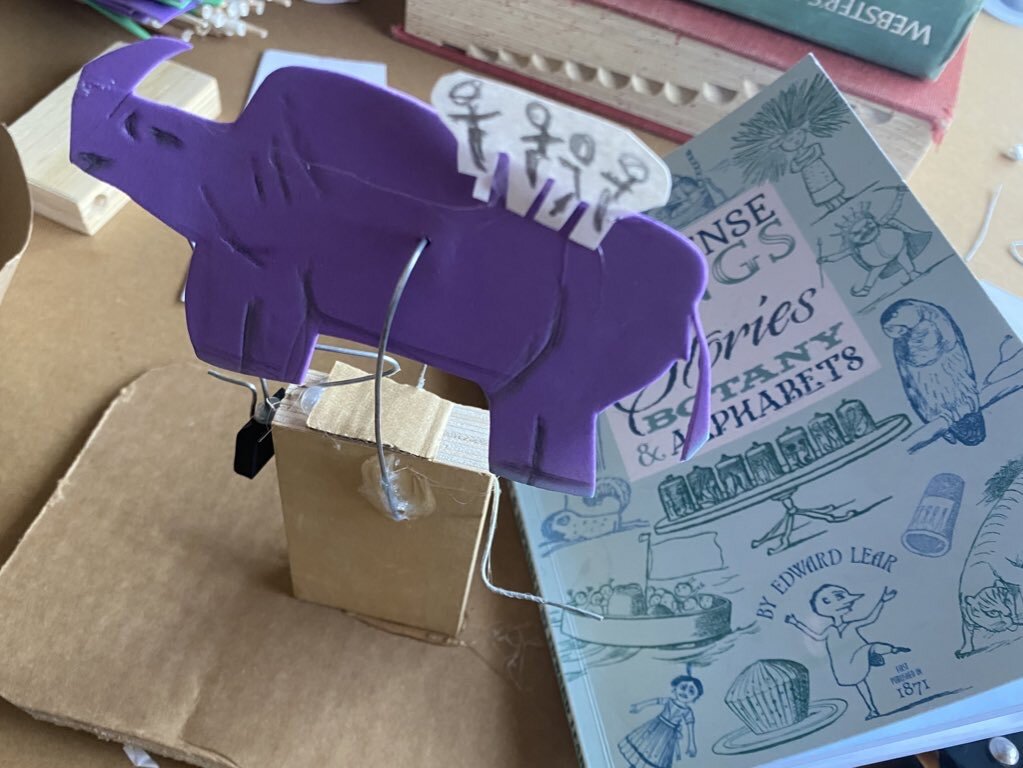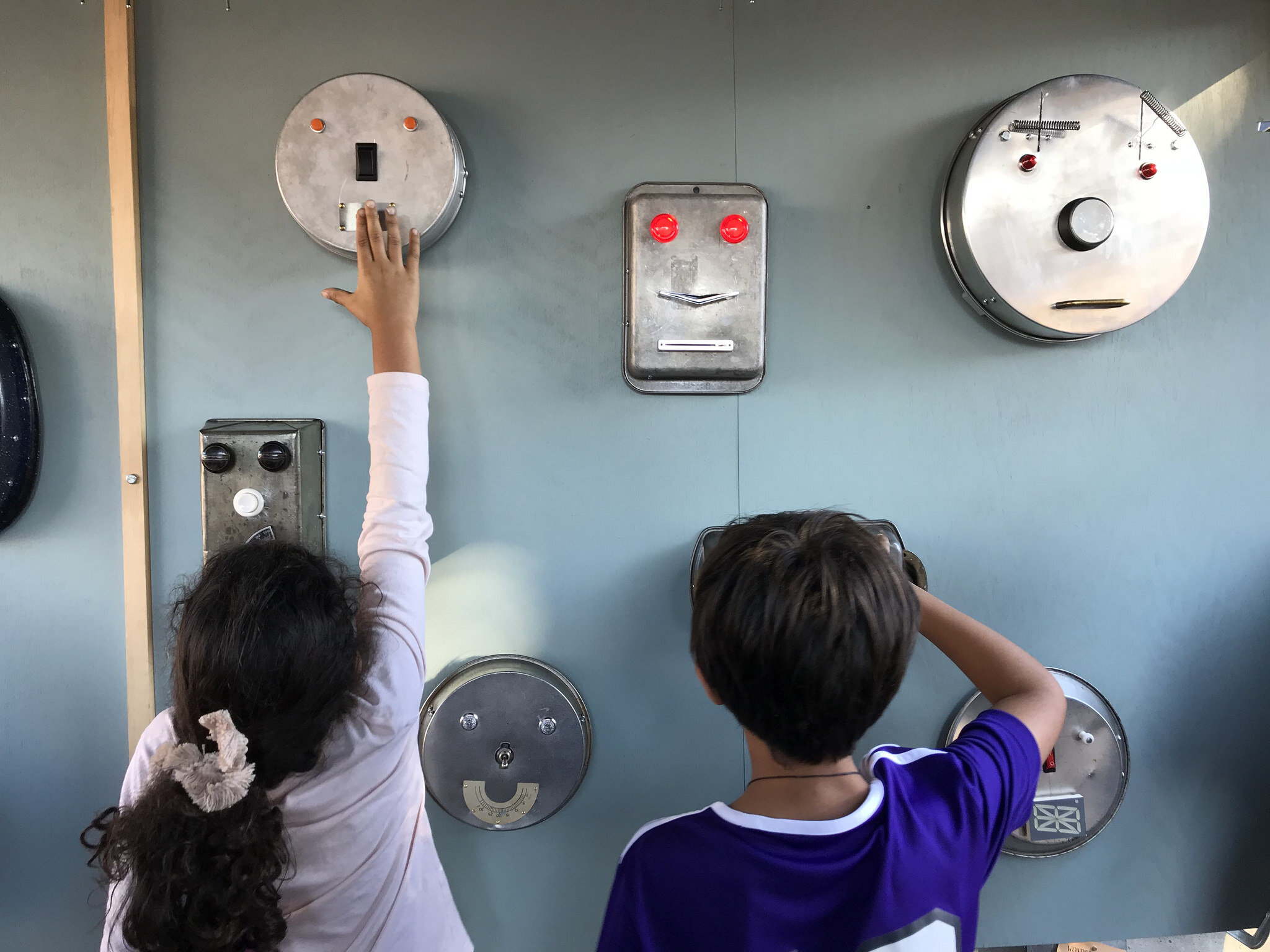Tinkering, Digital Tools and Storytelling
Over the past several months I’ve been interested in the ways that narrative and storytelling can be explored in connection with tinkering activities, especially those that make use of digital materials.
For me these experiments really got started last summer when I was working with the Tinkering School to design a new digital summer camp using the Micro:bit. Tinkering School programs often have an imaginative provocation to support learners to discover the materials and we adapted the challenge by having a different theme each week.
For the projects we focused on an alien invasion, underwater adventure, mystery week, hack your home, digital city and more. These over arching narratives allows for more playful and imaginative engagement with the materials and provided a scaffolding for the investigations.
More recently I’ve been working with the Cabaret Mechanical Theater in collaboration with the ‘A Town Explores a Book’ festival in Bexhill-on-Sea. For these workshops we’ve been inspired by the nonsense poetry of Edward Lear to create imaginative automata.
For one of the prompts we took a look at the nonsense alphabets and had the group each pick a letter to inspired their wood and wire automata. I made A was an anteater to get started and after the workshop we had “K was a kite”, “S is for surf” and even “P was for prancing putin”.
For another workshop we focused on “The Story of the Four Little Children Who Went Round the World”. Each of the tinkerers picked a line or image from the story that inspired them and used that as the jumping off point for their machine. It was so fun to collectively create a collection of scenes from the same narrative.
As usual, I’ve also been inspired by many other artists and organizations from around the world who are experimenting with similar ideas around storytelling and tinkering. My former colleagues in the Tinkering Studio have been “teaming up with Mr. Limata's Story Time to highlight a series of book and activity pairings”.
I’ve also enjoyed the playful automata creatures built by Jasmine Florentine and the Micro:bit parade developed by Celeste Moreno and Martine Segers. These are just a few of the examples of others who are thinking about the connections between narrative, characters and digital tools.
I’m excited to continue to explore these ideas so that we can open up new entry points for learners who might not be interested in engineering or programming but get connected through the imagination and story. Tinkering is often connected to personal interest and many of the strongest links can be built through personal stories and shared narratives.








